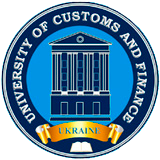Процес рецензування
Порядок рецензування рукописів статей у науковому журналі «Системи та технології»
Рецензування (експертне оцінювання) рукописів наукових статей здійснюється для підтримання високого науково-теоретичного рівня журналу «Системи та технології» та з метою відбору найбільш цінних та актуальних наукових робіт.
У журналі «Системи та технології» застосовано двостороннє сліпе (анонімне) рецензування: рецензенту не розкриваються особисті дані автора/авторів; автору/авторам не розкриваються особисті дані рецензента.
Наукові статті, які поступають в редакцію, проходять первинний контроль щодо відповідності до вимог оформлення наукової статті.
Первинна експертна оцінка наукової статті здійснюється головним редактором, або заступником головного редактора.
Редакція визначає для статті, що поступила на опублікування, рецензента зі складу члена редакційної ради, який курує відповідний науковий напрямок (спеціальність).
Рецензенти повинні бути відомими спеціалістами з тематики поданого рукопису та мати публікації у даній галузі досліджень (бажано за останні 5 років).
Після оцінювання наукової статті рецензент надає висновок:
- рекомендовано статтю до опублікування;
- рекомендовано статтю до опублікування після доопрацювання її автором з урахуванням висловлених зауважень;
- не рекомендовано статтю до опублікування.
Якщо рецензент рекомендує статтю до опублікування після її доопрацювання з урахуванням зауважень, або не рекомендує статтю до опублікування, в рецензії повинна бути вказана причина такого рішення.
Редакція рекомендує використовувати при рецензуванні Tипову форму рецензії, яка розміщена на сайті журналу.
При рецензуванні наукових статей рецензенти повинні:
- звертати особливу увагу на актуальність піднятої в статті наукової проблеми;
- оцінювати, як співвідносяться висновки автора з наявними науковими концепціями;
- оцінювати дотримання авторами правил наукової етики, коректності посилань на літературні джерела.
Наукові статті можуть направлятися на додаткове рецензування. Причинами для повторного рецензування можуть бути:
- недостатньо високий рівень первинного експертного висновку;
- гостра дискусійність положень, висловлених в науковій статті.
 ISSN
ISSN 




